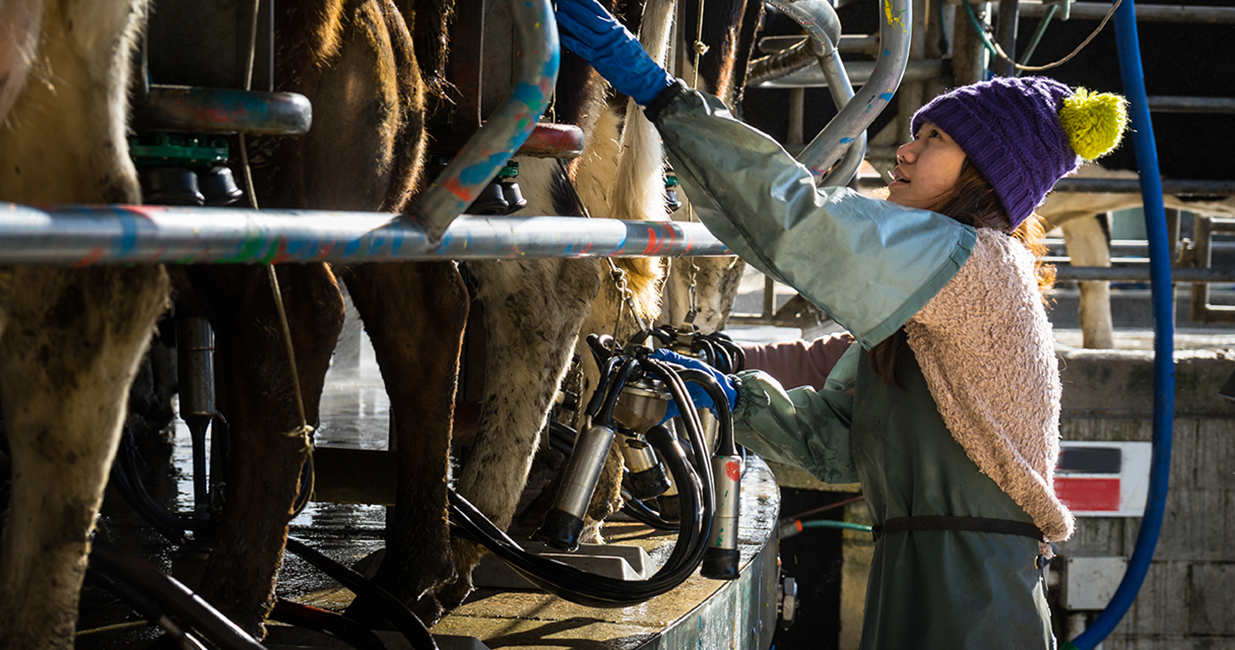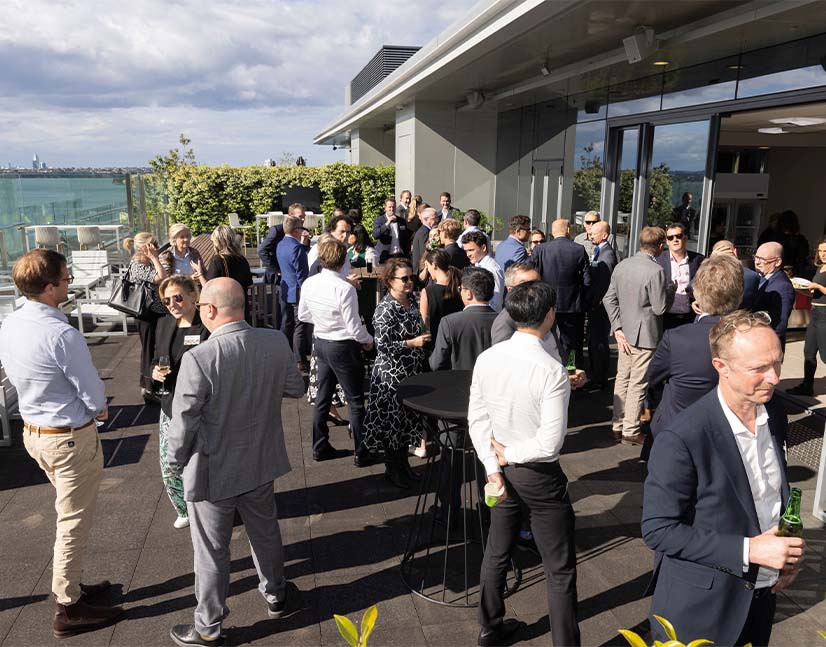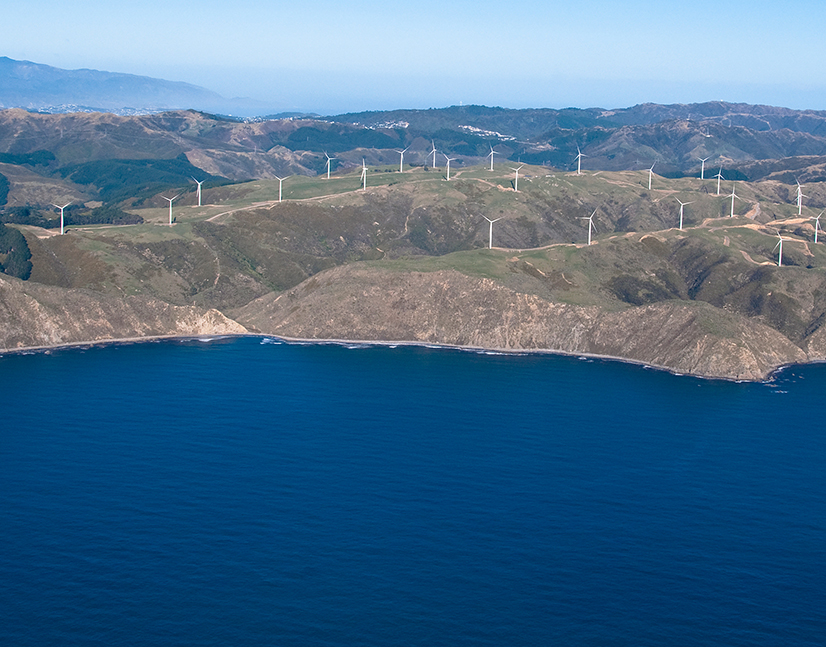
Farm-level delivery highlights Pāmu’s debut SLL
Pāmu’s debut sustainability-linked loan marks a step forward in sophistication and detail for this type of structure in New Zealand – according to the borrower and the bilateral facility’s lender, Westpac New Zealand. The three-year, NZ$85 million (US$60.1 million) deal incorporates four sustainability-performance targets, measured down to the level of Pāmu’s nationwide portfolio of 114 farms with equally weighted pricing incentives.
Pāmu, also known as Landcorp, is New Zealand’s biggest farming business. The borrower says its sustainability-linked loan (SLL) is the first in the agriculture sector to include a 1.5 degree science-based emissions-reduction target to be validated against global best practice.
Lisa Martin, general manager, sustainability at Pāmu in Wellington, and Joanna Silver, Westpac’s Auckland-based head of sustainable finance, share views on the facility, the borrower’s goals and the growing sophistication of New Zealand’s SLL market.
Agriculture is of course a major sector in the New Zealand economy and one with notable challenges in environmental transition. Why did Pāmu decide it was worth pursuing the SLL format for this financing?
MARTIN We have really strong thought leadership, a clear vision and focus on sustainability. What this means is we recognise that sustainability absolutely must be a part of our business in the agricultural sector. It is not only vital to our survival but a foundation for future growth – without it, we cannot continue to grow and prosper as a business. We are only too aware the choices we make today will have an impact now and in the future, so we are working hard to apply a balanced approach to every decision we make, every day.
The SLL, and in particular basing it on performance metrics, was a really good way for us to articulate our sustainability programme and ambition. We really wanted to be able to tie sustainability into our financial decision making to show that we are making a real, tangible commitment. It is not just lip service: it has potential financial benefits but also ramifications if we do not achieve our aspirations.
“We have gone for the most comprehensive of SLLs in the market today, because of the breadth of what it covers. It reflects our corporate ambition on wanting to stay within 1.5 degrees and setting science-based reduction targets. But the loan is not just about delivering corporate targets but setting our ambition at farm level as well.”
How did Pāmu approach the selection of sustainability metrics in the loan?
MARTIN The business is very focused on future-fit farming, so we wanted to position not just our farms but also our asset base to be highly sustainable and regenerative. Aspects like greenhouse-gas emissions, overall on-farm sustainability performance and the wellbeing of our teams are really critical elements – and materially significant to Pāmu. The SLL was an opportunity to weave together some of the key environmental, social and economic outcomes we want to achieve.
We have gone for the most comprehensive of SLLs in the market today, because of the breadth of what it covers. It reflects our corporate ambition on wanting to stay within 1.5 degrees and setting science-based reduction targets. But we have also thought about how these targets come to life on farms, which means the loan is not just about delivering corporate targets but setting our ambition at farm level as well. This is really where the rubber hits the road.
As well as designing a programme that will enable us to set emissions budgets and reduction plans at farm level, we have considered sustainability performance beyond the emissions piece: animal welfare, and environmental and social outcomes that can be achieved at farm level.
We have also included commitments to mental-health training, and to enhance our health and safety performance. Overall, it might seem to be quite broad – but our view is that it is a comprehensive set of metrics that are also quite interrelated.
The SLL market seems to be carving out capacity for more KPIs in individual transactions than sustainability-linked bonds (SLBs), which so far have typically focused on a small number of key goals. But even an SLL’s targets have to be measurable and reportable. How does this work with as comprehensive structure as that used by Pāmu?
MARTIN The KPIs are in three main areas: the greenhouse-gas component, on-farm sustainability performance and improving employee wellbeing. From these three KPIs, we have selected four sustainability-performance targets.
Two of these are within the greenhouse-gas reduction KPI: one is establishing a science-based target, getting it validated and achieving it, and the other is obtaining Toitū certification for all our farms. This gives third-party certification at farm level on greenhouse-gas emissions, reduction plans and budgets.
For the on-farm sustainability KPI, we have a scorecard with 50 metrics that allows us to identify sustainability-performance risk and opportunity at farm level.
The final performance target is on employee wellbeing, which relates to delivering year-on-year improvements in health, safety and wellbeing. This also contains a couple of elements, one of which is long-term injury frequency-rate performance and the other is rolling out mental-health training to all business and farm managers, and a proportion of their staff.
SILVER It all starts from the KPIs, which is what the SLL Principles say: start from the key sustainability indicators for the whole business. The targets naturally develop from these.
All businesses have a range of material sustainability metrics that are important to their stakeholders, and I think what we are seeing today – and what we really enjoyed working on with the Pāmu team – is an approach to sustainability that is broad and comprehensive right across the business.
This marks an evolution in the New Zealand SLL market. Early SLLs in NZ started with broad ESG [environmental, social and governance] ratings. But more recent deals – from the likes of Kathmandu and Summerset – followed the trend we have seen in Europe, of including a wider range of targets in three or four areas. This also meant the inclusion of both environmental and social aspects.
I believe the Pāmu deal is unique because it has the widest scope seen in New Zealand so far. First, there is the 1.5 degree-aligned emissions-reduction target across all emissions scopes, which is rare in NZ SLLs to date but will likely become the market norm soon.
Then Pāmu went a step further and extended this ambition to on-farm emissions-reduction plans coupled with a comprehensive on-farm sustainability programme. This means animal health, welfare, nutrition, environment, resource efficiency, people, culture, community and climate change – a range of different key metrics, all measured on farm.
Then Pāmu pointed out that its people are really important as well, so the question was how can we bring the social dimension into this conversation. Being able to include leading and lagging indicators on the health and safety metric, and then the mental wellbeing training as well, adds such a fulsome lens on sustainability prioritisation and commitment.
“Early SLLs in NZ started with broad ESG ratings. But more recent deals followed the trend we have seen in Europe, of including a wider range of targets in three or four areas. This also meant the inclusion of both environmental and social aspects. I believe the Pāmu deal is unique because it has the widest scope seen in New Zealand so far.”
How does all this come together in an SLL? When there is detail to the level of 50 metrics for each farm to meet, surely it cannot be as simple as requiring every individual farm to hit every metric?
MARTIN The baselines are established right from the outset. For instance, we have clarity on current greenhouse-gas emissions at corporate and farm level. When we talk about hitting emissions-reduction targets, we are working from a good level of information and an established baseline. It is the same with health and safety: we know what our baseline is in the lagging indicators and we also know what our ambition is.
On the other hand, some of the other programmes – like Toitū certification – has not been executed yet. The target there is to get across the line with 15 per cent of our farms in year one, 50 per cent by year two and 100 per cent by year three.
How the performance goals will be executed varies, in other words. But the way it works at farm level is that these targets are already written into our company business plan and individual KPIs. Essentially, we already have documented targets in place that apply at company level and down to farm and individual level.
We have been very detailed in how we set up our targets, in order that everything aligns well in the context of our business plan. It is deeply embedded and I believe it shows a good level of sophistication and commitment.
SILVER The reason these loans are so powerful is that they help encourage and support businesses to land on interim annual milestones as waypoints to eventual targets. Often the very fact of negotiating the targets for the SLL – before it has even been signed – means an organisation starts accelerating its sustainability engagement, milestone setting, programme establishment and project management. This has certainly been the case for Pāmu.
MARTIN I definitely agree with this. The level of rigour we have put into the SLL process – the third-party assurance process, structuring of the deal and the baseline components – have put us in a really good position. We now have a solid foundation with clarity on our sustainability ambition that has been externally checked, with many hours of work and discussion about our targets.
Borrowers often say going through the process of ESG-aligned financing helps them demonstrate their sustainability commitments internally, for instance to their employees. Is sustainability a concept that has a lot of support in the farming world?
MARTIN I have been blown away by the level of interest and commitment this initiative has generated within Pāmu. With Toitū certification, we have business and farm managers actively reaching out on how they can get on board. What they are looking for is guidance and help to do it – once they have those they are very keen indeed.
It is great to have this level of ambition beyond corporate level. Quite often, a company will have a big, high-level ambition but not really offer direction about how it will be achieved at site, farm or whatever level it may be. The real achievement with this SLL is that we have approached it from that angle as well – there is clarity about what things look like from a farm perspective.
The potential challenge with financing that includes this much granularity and detail is that it could prove off-putting to market entrants. Is there any concern that the expectations of lenders in SLLs could be sufficiently onerous that they stop some borrowers using the product?
SILVER Setting these loans up is a relatively linear process. They are generally for larger organisations, which have an understanding of the important sustainability issues their key stakeholders care about and a strategy to address and elevate those issues across the business. Businesses that understand the issues their stakeholders care about should be able to land on KPIs quite easily.
Some businesses will not have a lot of natural KPIs. They might look at climate change and a social target – the basics of doing the right thing. But the Sustainability Advisory Standards Board (SASB) shows that every single sector has key sustainability issues, and every borrower within each sector can look to those issues and understand how it is going to address them strategically across its business.
It is not vital to have four or five targets in an SLL – it might be just two or three. What matters is that the borrower is addressing the issues that are most material to its stakeholders.
It should be easy to demonstrate action in these material areas. We do peer benchmarking and analysis, for instance, and looking at the SASB – in every case not just looking at other sustainable finance transactions by peers, but also what other borrowers have identified as key sustainability issues for them. Then we bring all of this into the conversation with the borrower to help land on the right sustainability performance targets for them.
A lot of New Zealand businesses are increasingly well informed on these concepts, including the move from shareholder primacy to what has been called stakeholder capitalism. Investors are no longer the only stakeholders, in other words: it is also staff, regulators, consumers and the communities businesses operate within.
When businesses connect with all these stakeholders, they can understand what is important to them and then distil it down to meaningful, measurable, verifiable sustainability metrics from which to then choose ambitious, time-bound sustainability-performance targets.
It is true that issuers must be able to report on their targets every year, and every single target must be externally verified as part of the SLL reporting process in the loan. There is a cost, a reporting burden and a compliance requirement in these structures – and there needs to be to ensure integrity. This might lead issuers to lean toward having three rather than five metrics, say.
The other thing to say is that there is a broad pricing incentive level emerging in New Zealand, but overall we – like Australia – are typically toward the upper end of the 2-10 basis point global range. Even so, if a borrower has too many targets, it risks diluting the discount.
The lever to encourage achievement of each target lessens when there is less skin in the game for borrower and lender. We believe ambitious sustainability performance should be rewarded – and if we work together to address big environmental and societal issues, everybody wins.

WOMEN IN CAPITAL MARKETS Yearbook 2023
KangaNews's annual yearbook amplifying female voices in the Australian capital market.













